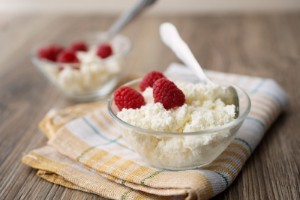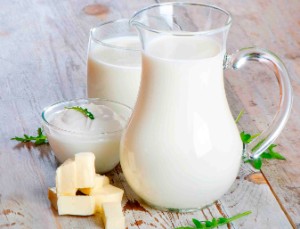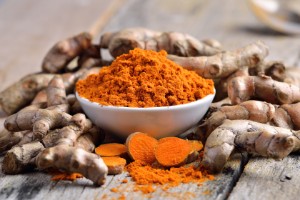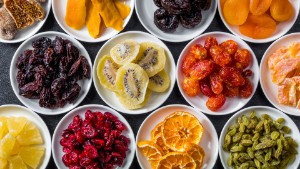Is milk good for the liver or harmful — scientific facts
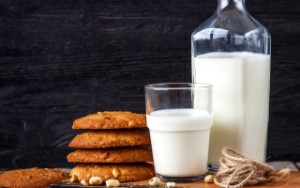 From the very moment we are born, we are accustomed to milk. It is believed that this is one of the most useful products for the human body. Some doctors also recommend using dairy products for certain pathologies of the gallbladder, pancreas, kidneys, as well as one of the most important organs of the liver.
From the very moment we are born, we are accustomed to milk. It is believed that this is one of the most useful products for the human body. Some doctors also recommend using dairy products for certain pathologies of the gallbladder, pancreas, kidneys, as well as one of the most important organs of the liver.
When conducting of one study , scientists came to this result: drinking 300 ml of cow's milk 3 times a day improved liver function and reduced inflammatory processes in a group of people suffering from Metabolic syndrome (MS) .
But in some cases, milk does not only benefit, but also harm. Many patients (especially in the modern world) suffer from lactose intolerance, allergic reactions to milk, as well as from pathologies of the liver and other gastrointestinal organs, in which dairy products must be limited.
In this article, we will look at the effects of cow's and goat's milk, as well as other dairy products, on the human liver. Let's discuss how they are useful and whether they can be harmful in certain situations. Let's tell you in which liver diseases you can drink milk, and in which &8212; it is better to give it up.
Cow's milk
First of all, it should be noted that milk is one of the most important foods for the body. From birth, every meal we eat is accompanied by mother's milk. Then the mother's milk is replaced by milk and dairy products of animal origin.
Useful properties
Cow's milk has the following beneficial properties:
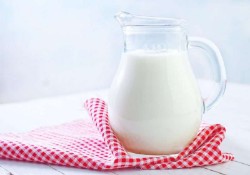
- Normalizes liver function. This product is important for the liver, as it contains sulfur, magnesium, sodium and phosphorus, one of the most important components for the normal functioning of the gland and the metabolic process. The average fat content of cow's milk varies between 3-3.6%.
- Removes slags and toxins. Milk perfectly cleanses the body of unwanted metabolic products, improves digestion and contains countless vitamins and minerals that are vital to our body at any age.
- Is a source of vitamin B and calcium. The drink contains fats, carbohydrates, proteins, and various organic acids. In addition, milk is a source of vitamin B and calcium, which in milk have the form that is most effectively absorbed by our body.
Many experts recommend adding dairy products and pure milk to the diet in the presence of the following diseases:
- Cirrhosis of the liver;
- Hepatitis;
- Pathology of the gallbladder (including gallstones);
- Violation of bile flow;
- Inflammation and infectious lesions of the liver and gallbladder;
- Cholecystitis.
Contraindications
Unfortunately, milk is an insidious product that is not allowed to everyone. Over the past few decades, there have been many allergy sufferers who do not tolerate lactose in principle. Among the contraindications to the use of dairy products in any form, there are:

- Allergic reactions of food origin;
- Lactose intolerance and lactose allergy;
- Gastrointestinal pathologies (including chronic pancreatitis, gastritis and ulcers);
- Sensitive intestines and increased acidity of the stomach;
- Frequent diarrhea and poor weldability;
- The presence of kidney stones;
- Some liver diseases (not everything is so clear here, with a sick liver, consultation with a doctor and several tests for the tolerability of the product are required).
Cow's milk is a very ambiguous product that is rarely well tolerated by adults. It is believed that toddlers and young children produce the enzyme renin, which processes all dairy products to the state of cottage cheese. In this form, the product is absorbed much faster and more efficiently. With age, the body stops producing this enzyme, due to which allergies or food intolerance develop.
Rules of use
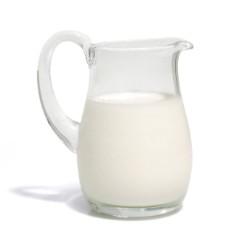 It is advisable to drink milk at the same time as following a diet. Dietary nutrition involves a complete rejection of fatty, spicy, fried, salty. You should also give up smoked meats and preserves, alcohol, and limit sugar consumption.
It is advisable to drink milk at the same time as following a diet. Dietary nutrition involves a complete rejection of fatty, spicy, fried, salty. You should also give up smoked meats and preserves, alcohol, and limit sugar consumption.
It should also be understood that milk should only be a component of the comprehensive treatment of liver diseases. In its own form, it is unlikely to give positive results. Do not forget that the decision to include a drink in your diet should be made only by the doctor who is watching you.
For those who have liver disorders, doctors advise to consume fresh low-fat types of milk in a warm form. Ideally, it is worth replacing a fresh drink with a fermented milk product, for example, kefir is also good for the liver .
Goat's milk
Often talking about cow's milk, many people forget about the existence of another kind of milk - goat's milk. It also has a beneficial effect on the liver (provided thoughtful and careful consumption).
Medicinal properties
Goat's milk has the following positive properties:
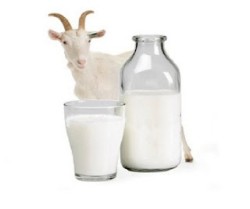
- Prevents the accumulation of fat in the liver. Goat's milk is able to accelerate the process of splitting fats, thereby preventing them from accumulating in the liver gland and preventing the development of fatty hepatosis and hepatitis. The substances included in the drink trigger regenerative processes in the liver tissues, thereby helping to restore the normal functioning of the organ faster. The product is also indicated for cirrhosis and for the prevention of liver cancer.
- Cleanses and removes toxins. The taste, of course, of this product is specific, and not everyone will put up with it, but it is this type of dairy product that cleanses the liver gland well and removes toxins from the body.
- Normalizes the process of hematopoiesis. It is believed that this particular drink is more useful for our body, because it has a higher percentage of fat content (4.3-4.5%), and also contains manganese and cobalt. Cobalt helps to normalize the process of hematopoiesis (one of the processes in which our liver is actively involved), and manganese has a general strengthening effect in liver problems.
- Contains easily digestible protein. The protein in goat's milk is much easier to digest, so the introduction of this drink into the children's diet is preferable.
Contraindications
As contraindications to the consumption of this type of milk are all the same pathologies that were discussed in the previous paragraph, which tells about the features of cow's milk.
Therefore, it is worth refraining from consuming goat's milk when obese or while dieting in order to lose excess weight.
Consumption features
 Nutritionists advise drinking fresh milk that has been heat treated. But in the case of goat's milk, it is worth remembering that storage in the refrigerator for this product should last no more than 3 days. After this period, the drink loses its beneficial properties.
Nutritionists advise drinking fresh milk that has been heat treated. But in the case of goat's milk, it is worth remembering that storage in the refrigerator for this product should last no more than 3 days. After this period, the drink loses its beneficial properties.
Any dairy product is, first of all, a complete meal. Therefore, it must be consumed separately. You can't drink milk with other food.
If you already have liver disorders, then it is worth replacing fresh dairy products with fermented milk. It is advisable to cook such products at home in order to preserve all the benefits and freshness of milk.
6 medical recipes
In nature, there are a huge number of recipes containing milk or dairy products as one of the main components. Therefore, you can easily find something suitable for yourself.
1. Rice milk porridge
One of the most popular varieties of milk porridge is rice. To prepare it, take:
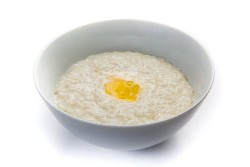
- 1 faceted glass of selected rice;
- 375 ml of milk;
- Sugar and salt for flavor;
- 1 teaspoon of butter.
Cooking process:
- Rinse the rice grains, pour them into a saucepan and fill with purified water. The water should rise about 1-2 centimeters above the rice.
- Add a little salt to the mixture and put it on the burner.
- Bring the future porridge to a boil, stirring it occasionally.
- As soon as you notice that the porridge is boiling, bake for 10-15 minutes.
- As soon as the time runs out, try the porridge for readiness. If the grains have become soft, then you can pour in pre-prepared milk and add sugar.
- Mix all the ingredients and bring the porridge to a boil again.
- Cook all this beauty for another 2-3 minutes and remove the pan from the heat.
- Leave the porridge to stand for another five minutes under the lid. Then add a piece of butter and mix.
- That's it, the dish can be served on the table.
2. Oatmeal
Another favorite dish of the majority is oatmeal porridge with milk. 5 useful properties of oats for the liver can be found here →
To prepare such a dish, take:
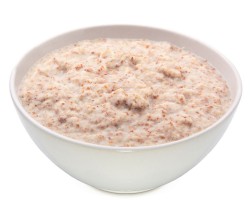
- Half a faceted glass of oatmeal;
- 250 ml of milk (it is advisable to take a natural product);
- 1-2 pieces of butter;
- 2 tablespoons of sugar;
- Salt to taste;
- Dried fruits optional.
Is prepared as follows:
- For cooking, select a container with thick walls or a double bottom.
- Pour the milk into a saucepan and put it on a small fire on the stove.
- Wait until it boils, and then pour in the oatmeal, sugar and salt.
- Cook the mixture for 7-8 minutes and do not forget to stir.
- About 3-4 minutes before the porridge is ready, add the pre-prepared dried fruits (if you have any).
- After the porridge is cooked, add oil to the saucepan, cover the container with a lid and leave this beauty for another five minutes.
- After that, the dish can be served on the table.
3. Buckwheat
To make buckwheat with milk, you need to take:
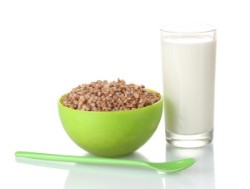
- 1 faceted glass of buckwheat grains;
- 650 ml of milk;
- 350 ml of purified water;
- A few pieces of butter;
- Sugar and salt for flavor.
Cooking recipe:
- Wash the buckwheat raw materials, inspect it for rotten grains or third-party debris.
- Pour the peeled grains into a saucepan, cover with water, add salt and put on fire.
- Bring the mixture to a boil, and then cook over this heat for another 10 minutes (until the water boils away).
- As soon as the liquid has all evaporated, turn off the heat and cover the container with a lid. Leave the porridge in this form for 3-4 minutes.
- After that, pour the porridge with milk, add a little granulated sugar, mix all the ingredients and send the mixture back to the stove.
- Bring the porridge to a boil, cook for 3-4 minutes, and then turn off the burner and remove the porridge from the stove.
- Add oil to the dish, cover the pan with a lid and leave to stand for another five minutes.
- After that, you can serve the porridge on the table.
4. Honey-milk cleaning
This simple cleansing scheme will help free your body from unwanted metabolic products, toxins and toxins. 5 facts about the effect of honey on the liver, see here →
Cleansing procedure:
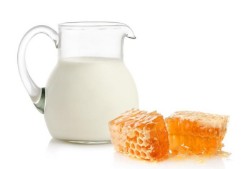
- In the morning 2-3 hours before the first meal, you should drink a cup of milk and eat it with a teaspoon of honey.
- The duration of such a procedure is 30 days.
- After that, a break is taken for 5-7 days, and therapy continues.
Before starting the procedure, consult with your doctor.
5. Honey-garlic cleansing
Garlic itself is good for the digestive tract. 9 facts about its effect on the liver can be found here →
The recipe for a mixture of milk and garlic provides for the use of the following components:

- 2-3 medium garlic cloves;
- 1 teaspoon of natural honey;
- 250 ml of hot milk.
The procedure is performed as follows:
- Crush the garlic, mix it with honey and add this mixture to hot (but not boiled) milk.
- To cleanse the liver, such a drink should be drunk warm daily in the morning before the first meal for 7 days.
- Then a week-long break is taken and treatment is resumed.
6. Oatmeal broth
A decoction of oats with milk can be prepared according to the following recipe:

- Rinse a glass of oatmeal grains, pour them with milk.
- Put the mixture on a low heat and boil.
- Then cover the container with a lid and cook the mixture in this state for about 90 minutes.
- After that, remove the broth from the burner and cool it.
- Strain the drink.
Drink a decoction for improving the liver in a warm or chilled form 2 times a day for a week.
Overview of other products
In addition to milk, other dairy products can be used to treat the liver. Which of them are the most useful?
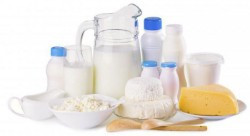
- Kefir . Fermented milk products are good at removing unwanted metabolic products and toxins from the body. Kefir helps to normalize digestion and reduce the load on the liver gland, preventing the development of hepatosis, cirrhosis and hepatitis;
- Cottage cheese . The composition of cottage cheese includes a substance such as methionine. It helps to establish fat metabolism, and this, in turn, prevents the deposition of fats on the liver;
- Hard cheeses. Hard cheeses are more easily absorbed by our body, saturating the body with proteins, vitamins and trace elements;
- Serum . Whey helps to break down all harmful deposits well, while not harming the liver and the body as a whole. Therefore, when cleaning the liver, it is good to add this product to the diet in order to speed up metabolism and eliminate toxins from the body.
Conclusion
Such a popular and controversial product as milk is not suitable for everyone. Despite the fact that some therapeutic diets allow the inclusion of fresh cow's or goat's milk in the menu, the use of this product should still be limited. It is also advisable to consult with your doctor and conduct a tolerance test for products containing lactose in order to avoid sudden indigestion or an allergic reaction.
